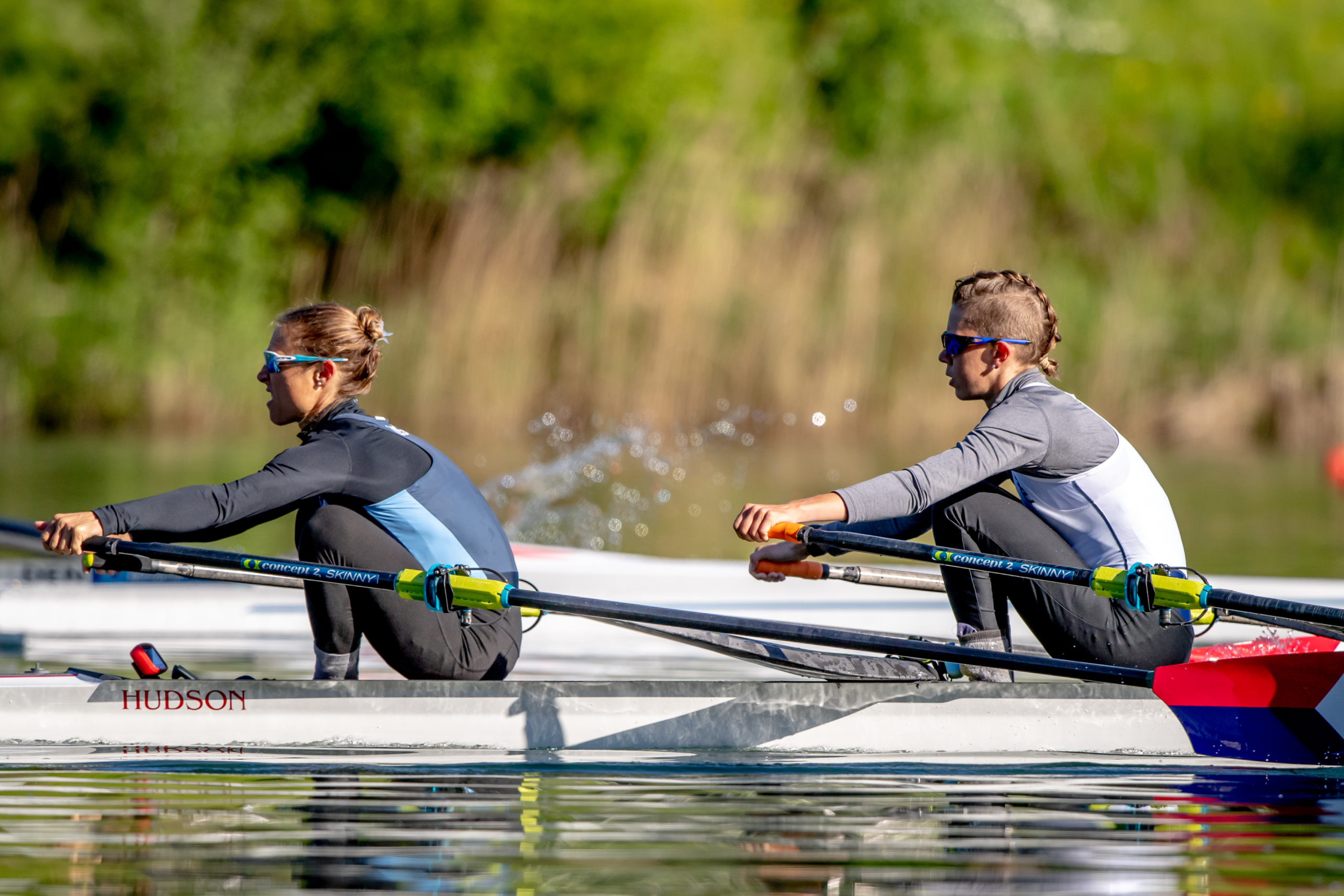BY BILL MANNING
PHOTO BY ED MORAN
To continue reading…
This article is exclusively for Rowing News subscribers. For as little as $5 a month, you can get access to the best quality, independent reporting on all the issues that matter to the North American rowing community.
Already a subscriber? Login
Balancing a boat is one of the trickier and more rewarding requirements of good sculling and rowing. It’s also one of the harder things to coach, as it is so experiential and dependent upon boat feel.
Make your initial aim to create a stable platform on which to do work. If the blades stay off the water, that is best, but it’s a mistake to emphasize this at the expense of stability.
Appreciate that stability is a much bigger challenge on the recovery than on the drive. Typically during the drive, the blades lock in against the water and serve as in the same way as training wheels on a bicycle, keeping the boat upright. Without the training wheels during the recovery, things get more precarious.
Focus on the oarlocks rather than the blades. Teach athletes to keep the riggers level, like the wings on a plane. The boat will go much faster if level, despite the blades dragging a bit, than if the athletes are fighting to get the blades off the water, and only occasionally doing so.
Recognize that boat speed and stability are related. Continuing the bicycle analogy, it’s nearly impossible to stand a bike up, but it easily stays upright when moving forward. Instruct athletes to keep some pressure on the drive and the rate up a bit. A faster recovery speed will make balancing the shell easier. The boat sits up more on top of the water when it’s moving faster. Too often, coaches insist on paddling and keeping the rate low, thinking this makes rowing easier when, in fact, it hinders stability. Without stability, the athlete can’t apply power effectively.
Coach people to sit properly on their seat. Athletes will mistakenly lean away from their rigger, especially if their height is too low. The lateral pressure of the collar into the oarlocks centers the athlete and strengthens the connection to the boat. Teach them to think of their body as a fortress of stability connecting the oar handle(s) to their shoes. (Thank you Gordon Hamilton for this analogy.)
Teach using the feet and hands to establish balance rather than leaning this way and that with the body. It’s nearly impossible to set a boat with uncoordinated bodies leaning; it’s less powerful and it makes one more susceptible to injury. The higher foot can press down harder to create stability. Adjusting the handle heights slightly to even out the rigger heights is far more effective than trying to lift the blades off the water. If a rigger is high, lower the handle. If a rigger is low, raise the handle.
Coaching stability in rough water is an even greater challenge. Again, it generally pays to row at a slightly higher rate. Doing so speeds up the boat and keeps it more stable. It also acknowledges that there will be some bad or missed drives and minimizes their impact because of the increased frequency of strokes. When rowing with a quicker recovery, it is essential to coach that the blades must be quicker to the water and the legs quicker on the push.

